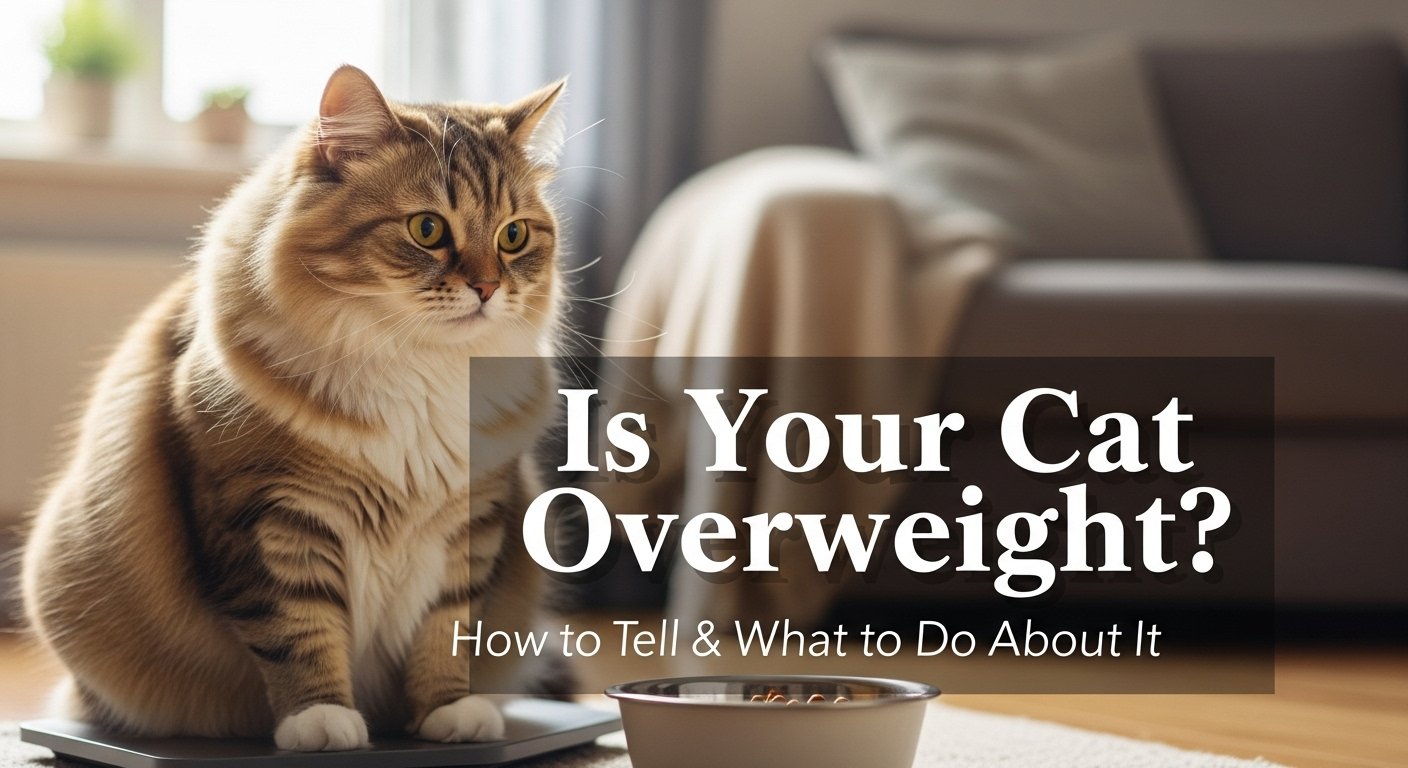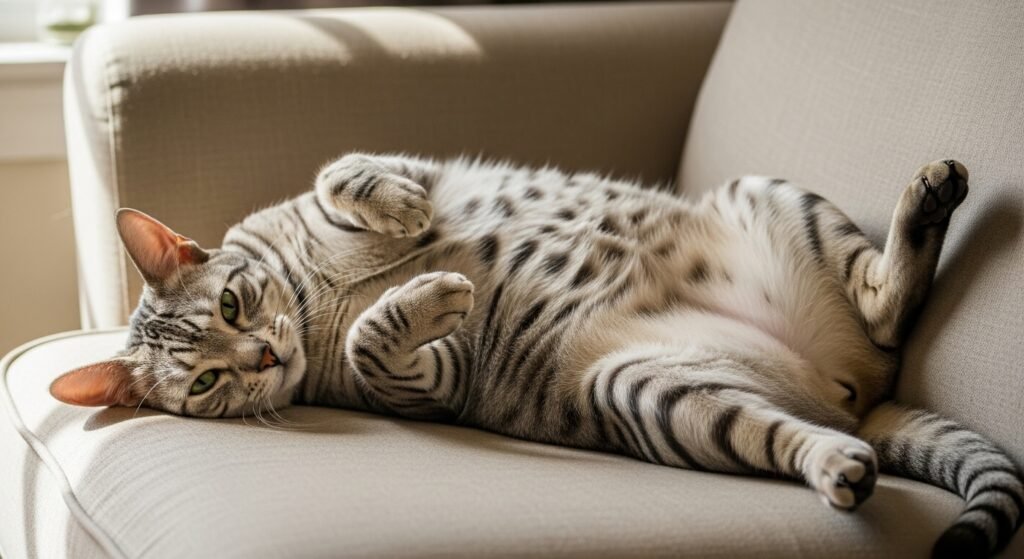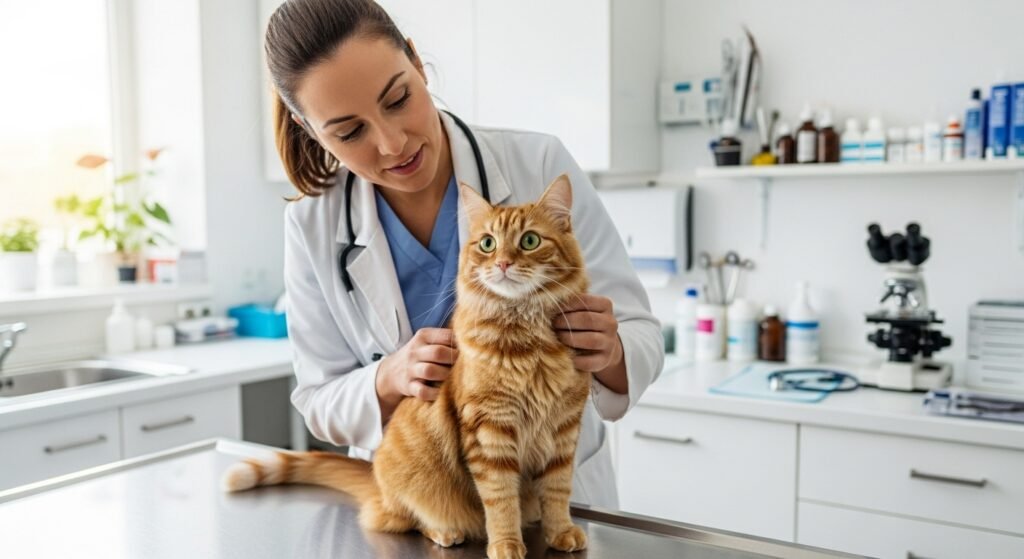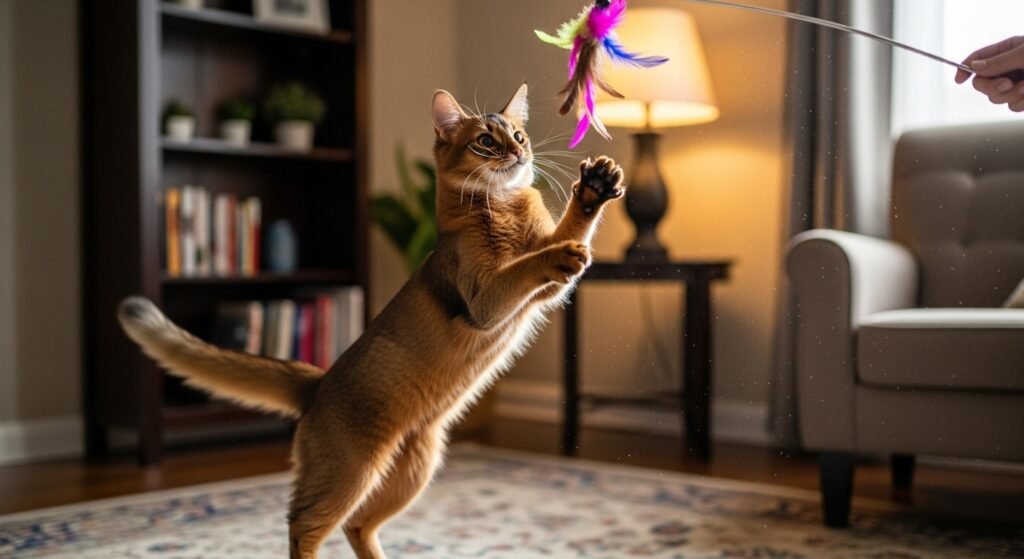
How to Tell If Your Cat Is Overweight (And What to Do About It)
We all love spoiling our cats, whether with extra treats or cozy naps on the couch. But what happens when “fluffy” starts looking more like “chunky”?
Obesity in cats is a growing problem in the U.S. According to the Association for Pet Obesity Prevention, over 60% of cats are overweight or obese. Carrying excess weight not only affects a cat’s appearance but can also shorten their lifespan and lead to serious health issues.
So, how can you determine if your cat is overweight, and what steps can you take to help them lose weight safely? Let’s break it down.
Why Cat Weight Matters
Extra pounds put stress on your cat’s joints, heart, and overall health. Overweight cats are at higher risk for:
- Diabetes mellitus
- Arthritis and joint pain
- Heart disease
- Respiratory issues
- Liver problems
- Shortened lifespan
Maintaining a healthy weight means your cat will be happier, more active, and live longer.
Signs Your Cat Might Be Overweight
- The waistline is not visible
When viewed from above, a healthy cat should have a slight inward curve at the waist. If your cat looks more like a rectangle, they may be overweight.
- Difficulty Feeling Ribs
Run your hands along your cat’s sides. In a healthy cat, you should feel the The ribs are tender and have a thin layer of fat. If you have to press hard, that’s a warning sign.
- Sagging Belly (Fat Pad)
Some cats naturally have a “primordial pouch” under the belly, but if it’s swinging heavily or seems very thick, it could be excess fat.
- Lethargy
Cats carrying extra weight often tire easily and prefer lounging to playing.
- Trouble Grooming
If your cat struggles to reach certain areas while grooming, weight may be the culprit.

Using the Body Condition Score (BCS)
Veterinarians use a Body Condition Score (BCS) chart to determine if a cat is underweight, ideal, overweight, or obese.
The scale ranges from 1 to 9:
- 1–3: Underweight
- 4–5: Ideal weight
- 6–7: Overweight
- 8–9: Obese
This assessment looks at rib coverage, waist definition, and abdominal fat. Your vet can help score your cat and set a weight goal.
Common Causes of Feline Obesity
- Overfeeding: Free-feeding or giving too many treats
- Lack of Exercise: Indoor cats may not get enough activity
- Age: Older cats are less active and gain weight easily
- Neutering/Spaying: Alters metabolism slightly
- Medical Issues: Thyroid or metabolic conditions (rare but possible)

What to Do If Your Cat Is Overweight
- Consult Your Vet First
Never put your cat on a diet without veterinary guidance. Crash diets can cause fatty liver disease (hepatic lipidosis), which is life-threatening.
- Switch to a Portion-Controlled Feeding Plan
- Use a measuring cup for precise portions
- Consider multiple small meals instead of free-feeding
- Ask your vet about weight-management cat food
- Cut Back on Treats
Limit treats to 10% or less of daily calories. Choose healthy options like freeze-dried chicken or vet-approved snacks.
- Encourage Exercise
- Play daily with wand toys, lasers, or interactive games
- Provide cat trees, scratching posts, and climbing spaces
- Try puzzle feeders to make mealtime more active
- Track Progress
Weigh your cat regularly at home (using a pet scale or bathroom scale method). Slow, steady weight loss is best about 1–2% of body weight per week.

Tips for Multi-Cat Homes
If you have multiple cats with different body types:
- Feed them in separate rooms
- Use microchip-activated feeders for portion control
- Prevent “food stealing” from thinner cats
When to Worry
Call your vet immediately if your overweight cat also shows:
- Sudden weight loss (could indicate illness)
- Labored breathing
- Trouble walking or jumping
- Refusal to eat for more than 24 hours
Final Thoughts
Having a chubby cat may seem cute, but obesity can seriously impact your feline’s quality of life. The good news? With a combination of veterinary guidance, portion control, Regular playtime can help your cat maintain a healthy weight in a safe manner.
The goal isn’t just a slimmer cat it’s a happier, more active, and longer lived best friend.



